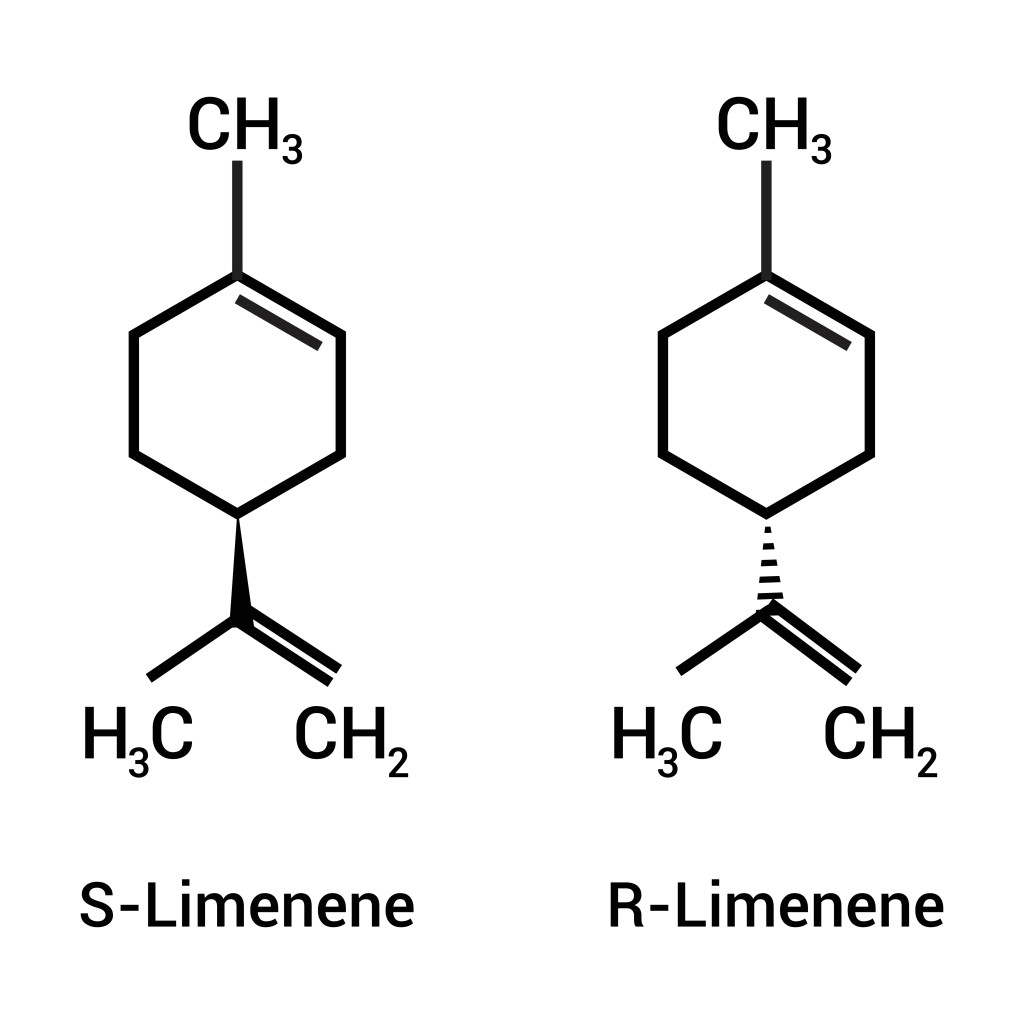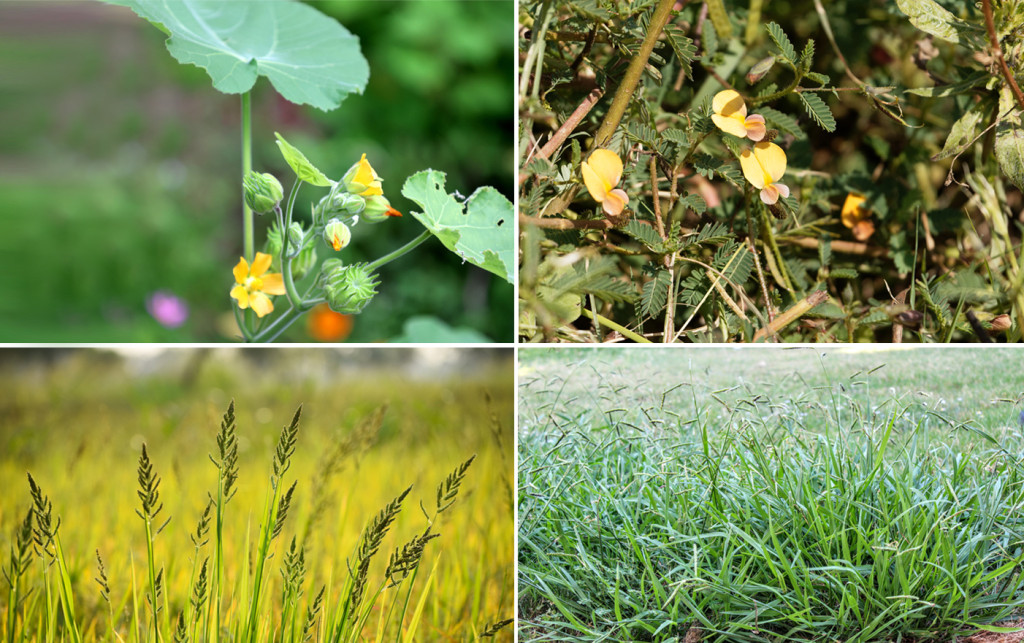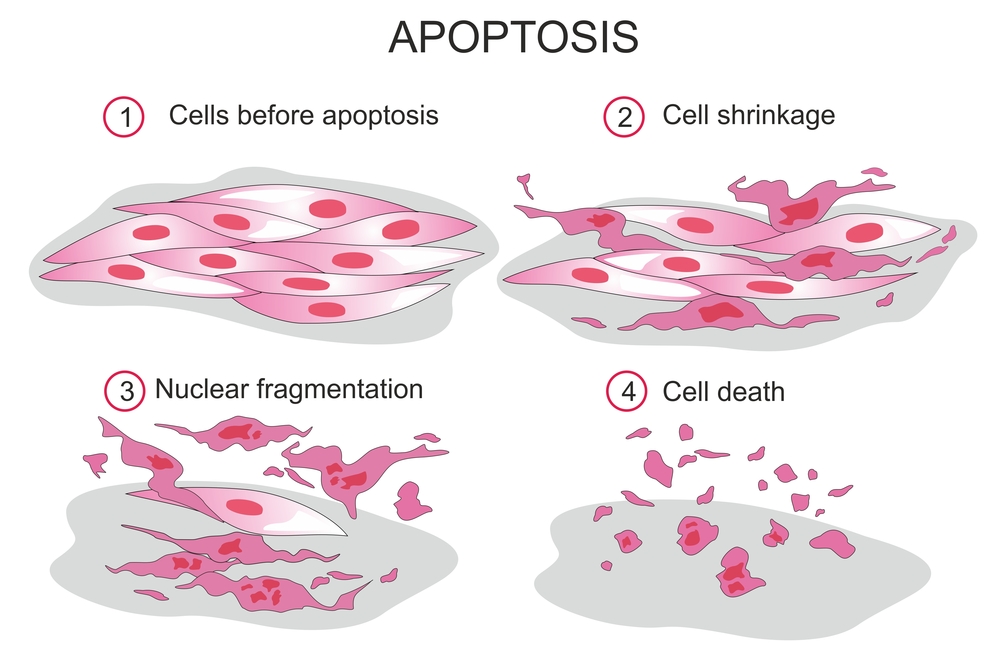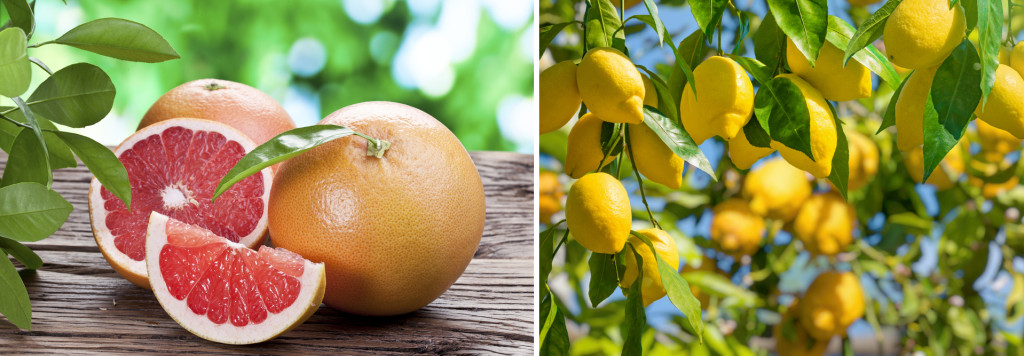Table of Contents (click to expand)
Limonene is a natural product found mainly in the peels of citrus fruits, like oranges. It acts as a natural herbicide and insecticide, and has wide-scale applications in food preservation and flavoring. Limonene also shows therapeutic effects and is used as an antioxidant in numerous drugs.
Nature has been our friend and foe in different times and places; however, its friendship outweighs the animosity on the grand arc of humanity. Limonene is one such product of nature’s friendship. It is a natural product belonging to the chemical class of terpenes and found mainly in the peels of citrus fruits like oranges and lemons.
Limonene has two enantiomers → (+)-Limonene and (-)-Limonene. Enantiomers are optically active compounds that rotate the plane of polarized light in opposite directions. They are non-superimposable mirror images of each other. If the compound rotates the plane of polarized light in a clockwise direction, it is assigned a ‘+’ sign and if it rotates it in a counter-clockwise direction, it is assigned a ‘-‘ sign.
(+)-Limonene has a lemony smell and (-)-Limonene has a minty smell. (+)-Limonene has wide-scale applications and is found in citrus fruits as an essential oil. For simplicity, throughout this article, I will refer to (+)-Limonene as limonene.

You might be asking, ‘Why should I be interested in a small compound like limonene?’.
To answer that, I would like to take you on a small journey of how limonene has become so pervasive in industries and medicinal studies around the world.
Plants And Crops
It is difficult to grow crops in truly ideal conditions of perfect soil, the right amount of rain, and a good microbial culture for roots. Even if you think you have found the Goldilocks condition, there will be at least one organism that is always on the cusp of snatching away nutrients from the plants; these are mainly insects, weeds, fungi, and small shrubs.
Farmers frequently turn to synthetic chemicals like pesticides, herbicides, and fungicides to get rid of these nuisances. They not only kill these parasites, but also harm the crop or plant on which they are sprayed.
Limonene is proven to solve this problem, as it acts as a natural herbicide and insecticide. It is one of the earliest natural products identified as an insecticide in the USA (1958).
When applied on leaves, limonene prevents the growth of weed species like velvetleaf, Indian joint vetch, barnyard grass, and southern crabgrass.

As an interesting fact, French marigolds are often grown along with tomato plants. Their flowers and leaves release limonene, which repels the common pest called a glasshouse whitefly. These insects cause major drops in tomato yields; growing French marigolds helps farmers save their yields and simultaneously avoids the risks of synthetic pesticides.
Also Read: What Are Biopesticides?
Food Preservation And Flavoring
We cook food from freshly available vegetables and grains, so they are consumed within a short span of time after they are harvested. There are fewer chances of them getting spoiled in this way; on the other hand, packaged and processed foods have a higher chance of getting spoiled, as they are typically stored for longer.
Food and beverage industries use preservatives that increase the shelf life of the food. Though these preservatives go through strict tests before their usage, they still have certain unwanted side effects, as they are synthetic chemicals. The need for natural preservatives is high, but only a few molecules have shown the desired effect.
Limonene is one such molecule.
Stored food often accumulates reactive oxygen species (ROS) like hydrogen peroxide (H2O2) and glutathione (GSH), which cause the degradation of food. Reactive oxygen species are mainly oxygen-containing molecules that react easily with other molecules and damage cellular proteins, DNA and RNA.
Limonene suppresses their production and increases the shelf life of packaged food. This clearly demonstrates the antioxidant properties of limonene and makes it an ideal candidate for natural preservation.

Not only can limonene protect the food, but it can also flavor it. Flavored foods like pudding, juice and ice cream are a treat, and are largely delicious due to limonene. Limonene is categorized as ‘generally recognized as safe’, (GRAS) by the Code of Federal Regulations, USA, so it is widely used as a flavoring agent (lemony taste) in the food and beverage industries.
Also Read: What Are Esters? – Formation, Properties And Uses
Alternative Medicine
Our immune system is constantly fighting to keep us healthy, but at times it is overpowered or hampered by disease.
Pharmaceutical drugs alleviate our symptoms and treat those diseases, but what if a natural chemical can help us do the same thing? Limonene has shown such therapeutic effects, which helps to further drive research for natural molecules for disease treatment.
Limonene shows an anti-inflammatory response by interfering with the regular inflammatory pathway in our body and modulating the release of cytokines. Owing to its reactive oxygen species (ROS) scavenging, limonene is also useful as an antioxidant in drugs.
When combined with anti-cancer drugs, limonene enhances their effectiveness by showing an apoptotic effect (cell death) on tumor cells. In diabetes mellitus, a patient’s physiology is worsened by substances called advanced glycation end-products (AGEs), which cause a pro-inflammatory response. Leaves of the Indian bael tree contain limonene and have shown an antiglycative effect even in low dosages.

Eco-friendly Solvent
Throughout the journey of limonene, one thing remains common, i.e. chemicals. In every situation where limonene is trying to become an alternative, it is replacing a chemical. Herbicides, insecticides, antioxidants, and drugs are all chemicals. They require large amounts of raw chemicals and solvents for their production. These solvents are mainly petroleum-based and are non-biodegradable.
The push is towards finding a greener solvent that reduces carbon footprints and is less toxic to the environment. It is almost as though life comes full circle, because limonene not only acts as a natural alternative to the above-mentioned chemicals, but also acts as a green solvent to make them. It has shown properties of non-polar solvents, like weak hydrogen bonding, degreasing and hydrophobicity, which makes it a good bio-solvent.
Is Limonene The Jack Of All Trades?
Apart from these applications, limonene is also used in perfumery for citrus fragrances and to make environmentally friendly water-based cleaning formulations. It has shown protective effects on gastrointestinal ulcers, treating allergic responses of the respiratory tract, along with many other health benefits.

The above applications might make you wonder if Limonene is that super-chemical that will solve all your problems.
That’s unfortunately not the case. Though limonene has shown such promising results, there are certain limitations.
When it comes to drugs, many of limonene’s therapeutic effects have been studied in-vitro, i.e., outside the patient’s body in a controlled environment. Whether it will show the same therapeutic effect when ingested is still under study and has not been proven completely. In spite of limonene acting as a bio-solvent, industries don’t use it for large-scale production because of its high cost. Solvents like n-hexane are cheap and in a surplus amount, as compared to limonene.
Conclusion
As you can see, limonene isn’t perfect for all situations; however, it has proven to be a good alternative. It is still used in many places and its applications have shown us how powerful nature’s creations truly are. It has also guided research toward finding natural alternatives to synthetic counterparts.
So, next time you pick up an orange, perhaps you will look at that stubborn peel a bit differently!
How well do you understand the article above!

References (click to expand)
- Ciriminna, R., Lomeli-Rodriguez, M., Demma Carà, P., Lopez-Sanchez, J. A., & Pagliaro, M. (2014). Limonene: a versatile chemical of the bioeconomy. Chem. Commun.. Royal Society of Chemistry (RSC).
- Ibáñez, M. D., Sanchez-Ballester, N. M., & Blázquez, M. A. (2020, June 3). Encapsulated Limonene: A Pleasant Lemon-Like Aroma with Promising Application in the Agri-Food Industry. A Review. Molecules. MDPI AG.
- Vieira, A. J., Beserra, F. P., Souza, M. C., Totti, B. M., & Rozza, A. L. (2018, March). Limonene: Aroma of innovation in health and disease. Chemico-Biological Interactions. Elsevier BV.
- Negro, V., Mancini, G., Ruggeri, B., & Fino, D. (2016, August). Citrus waste as feedstock for bio-based products recovery: Review on limonene case study and energy valorization. Bioresource Technology. Elsevier BV.
- Gu, Y., & Jérôme, F. (2013). Bio-based solvents: an emerging generation of fluids for the design of eco-efficient processes in catalysis and organic chemistry. Chemical Society Reviews. Royal Society of Chemistry (RSC).
